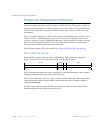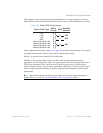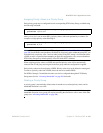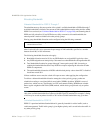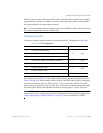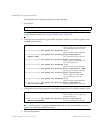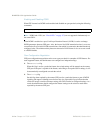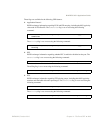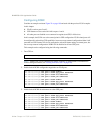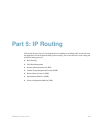
BLADEOS 6.5.2 Application Guide
212 Chapter 14: FCoE and CEE BMD00220, October 2010
Enabling and Disabling DCBX
When CEE is turned on, DCBX can be enabled and disabled on a per-port basis, using the following
commands:
Note – DCBX and vNICs (see “Virtual NICs” on page 153) are not supported simultaneously on
the same G8124.
When DCBX is enabled on a port, Link Layer Detection Protocol (LLDP) is used to exchange
DCBX parameters between CEE peers. Also, the interval for LLDP transmission time is set to one
second for the first five initial LLDP transmissions, after which it is returned to the administratively
configured value. The minimum delay between consecutive LLDP frames is also set to one second
as a DCBX default.
Peer Configuration Negotiation
CEE peer configuration negotiation can be set on a per-port basis for a number of CEE features. For
each supported feature, the administrator can configure two independent flags:
The advertise flag
When this flag is set for a particular feature, the switch settings will be transmit to the remote
CEE peer. If the peer is capable of the feature, and willing to accept the G8124 settings, it will
be automatically reconfigured to match the switch.
The willing flag
Set this flag when required by the remote CEE peer for a particular feature as part of DCBX
signaling and support. Although some devices may also expect this flag to indicate that the
switch will accept overrides on feature settings, the G8124 retains its configured settings. As a
result, the administrator should configure the feature settings on the switch to match those
expected by the remote CEE peer.
RS G8124(config)# [no] cee port <port alias or number> dcbx enable



